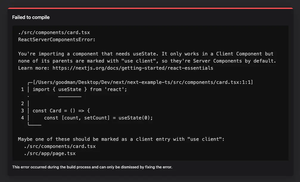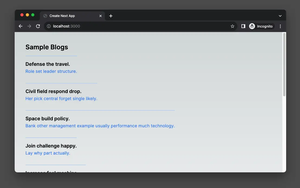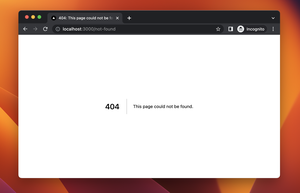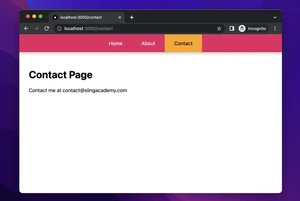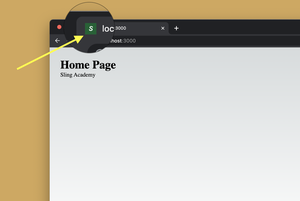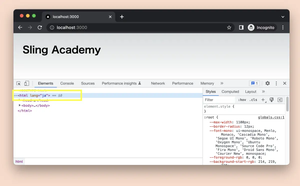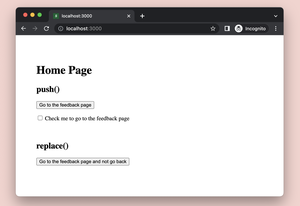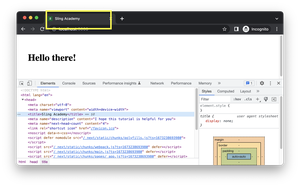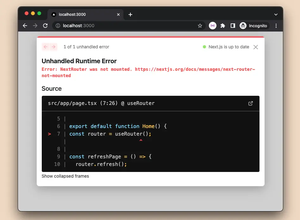Developing with Next.js offers an enjoyable experience alongside many out-of-the-box optimizations. One such feature is the Image component, which is designed to automatically handle image resizing, optimization, and performance. Yet, as with any tool, sometimes you might run into issues. A common stumbling block is encountering an error when using CSS classes with the Next.js Image component. In this guide, we’ll explore the potential causes and solutions to this problem, ensuring your development workflow remains as streamlined as possible.
Understanding the Error
Before diving into the solutions, it’s crucial to comprehend the core of the issue. The Image component operates differently from a standard HTML <img> tag. Under the hood, the Image component from Next.js uses a div element to wrap the actual image. This implies that if you attempt to apply CSS classes directly to the Image component as you would with an img tag, they might not work as expected because they are being applied to the containing div, not the image itself. This behavior can cause styles not to be applied or lead to unexpected results.
Adjusting Your CSS Approach
The first solution is to tweak your CSS to cater to the structure of the Image component. You can target the child img element within the Next.js Image component by using the CSS descendant selectors. Therefore, if you have applied classes to the Image component, ensure that the rules are correctly styling the inner image element. Here’s an example:
<style>
.myImageClass img {
border-radius: 50%;
object-fit: cover;
}
</style>
<Image
src="/path-to-your-image.jpg"
alt="Example image"
width={500}
height={300}
className="myImageClass"
/>In this CSS, the .myImageClass img selector targets the actual image within the Image component wrapper, applying the desired styles to it.
Utilizing Inline Styles
Next.js allows you to use inline styles, which can be directly applied to the image. Though this approach is less scalable and not ideal for maintaining a large codebase, it serves as a quick fix when you encounter issues with CSS classes. Implementing an inline style is straightforward:
<Image
src="/path-to-your-image.jpg"
alt="Example image"
width={500}
height={300}
style={{ borderRadius: '50%', objectFit: 'cover' }}
/>
With inline styles, the CSS properties are directly added to the style attribute of the internal img element created by the Next.js Image component.
Using Global Styles
Another method to rectify styling issues is by using global styles. Next.js supports CSS Modules by default, which locally scope CSS by automatically creating unique class names. Occasionally, you may want to apply universal styling rules that affect all images. To do this, you can create a global CSS file and import it in your custom _app.js file:
/* styles/global.css */
img {
border-radius: 50%; object-fit: cover;
}Then in your _app.js:
import '../styles/global.css';
function MyApp({ Component, pageProps }) {
return <Component {...pageProps} />;
}
export default MyApp;Applying global styles ensures all images within your application adhere to the specified rules.
Utilizing Forwarded Refs
If you’re comfortable with more advanced React patterns, another solution is to use forwarded refs. React allows you to ‘forward’ refs through components, enabling you to target the underlying HTML element of the Next.js Image component. Here’s an example of what it looks like:
import React, { useRef, useEffect } from 'react';
import Image from 'next/image';
const MyComponent = () => {
const imgRef = useRef();
useEffect(() => {
if (imgRef.current) {
imgRef.current.style.borderRadius = '50%';
imgRef.current.style.objectFit = 'cover';
}
}, []);
return (
<Image
src="/path-to-your-image.jpg"
alt="Example image"
width={500}
height={300}
ref={imgRef}
/>
);
};
export default MyComponent;Here, the `useRef` hook creates a reference to the Image component, and `useEffect` applies the styles directly once the component mounts. While this method offers precise control, it’s more complex and should be used sparingly to prevent direct DOM manipulations, which can conflict with React’s declarative nature.
Conclusion
Whether it’s adjusting your CSS styling strategy, applying inline styles, leveraging global styles, or using advanced techniques like forwarded refs, several solutions exist to fix errors encountered with the Next.js Image component and CSS classes. Each approach has its use cases, and choosing the right fix depends on the specific requirements of your project. Understanding how the Next.js Image component works under the hood empowers you to implement styles effectively, ensuring your website looks and performs at its best.


